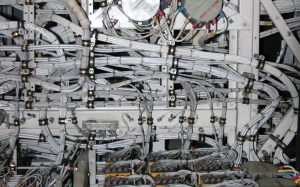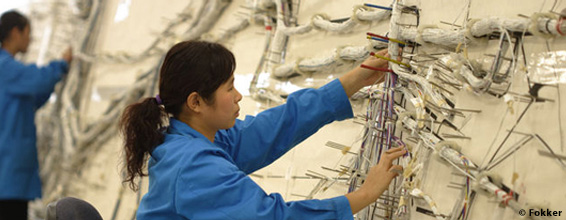Aeronautics research generates a lot of high-grade technology. Expertise in the field of aerodynamics has, for example, also proved useful in the design of high-speed trains and in increasing the efficiency of wind turbines. At the behest of the REWIN regional development agency in West Brabant, NLR studied whether Fokker ELMO’s specialist expertise in high-tech aircraft wiring has broader applications in industry. This project fell within the Business Accelerator (BAC) framework and spawned technologies that may be of interest in other fields, including the automotive or processing industries.
Aircraft wiring is nowadays referred to as Electrical Wiring Interconnecting System or EWIS design. The reason being that wiring harnesses are part of a complete system of electrical connections. The aviation industry is governed by rigorous safety regulations for developing, installing and maintaining EWIS. Electrical wiring must never be installed under hydraulic systems, for instance. Hydraulics may leak, which could cause spark formation in a live connection. Also, wiring must never be run over a sharp edge, as that too could cause a fire or short-circuiting hazard. In the past, such errors have resulted in serious civil aviation accidents.
To prevent such accidents occurring, airworthiness requirements now incorporate complex regulations applying to the development, installation and maintenance of EWIS in civilian aircraft. A number of specialist tools are being devised in BAC projects to promote efficient and effective compliance with these requirements. These include virtual aids for installation and maintenance, ‘enhanced reality’, and customised smartphone apps.
Aircraft wiring systems have to meet rigorous safety standards. Expertise in this field can also be applied in the automobile or processing industries.


